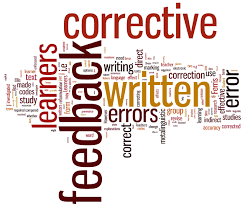There is a extremely little academic literature in the Netherlands regarding debate use in secondary classrooms, whether it be for critical thinking or language acquisition. So far, the academic opus for Dutch debate is “Invest in What Energizes Students Learn: Investigating Students’ Attitude towards Debate in the Foreign Language Classroom.”  Written by a Ph.D. student and two professors at Utrecht University, the research study focuses on the attitude of Dutch students towards debate as an instructional tool in the foreign language classroom. The authors found that “debate does not only help students deepen their comprehension of the issue/topic in question and foster their critical thinking abilities, but it helps them enhance their language proficiency as well. By facilitating input and output, debate has ability to furnish students with a chance to take part in a learning process that involves practicing the four major skills of language.”
Written by a Ph.D. student and two professors at Utrecht University, the research study focuses on the attitude of Dutch students towards debate as an instructional tool in the foreign language classroom. The authors found that “debate does not only help students deepen their comprehension of the issue/topic in question and foster their critical thinking abilities, but it helps them enhance their language proficiency as well. By facilitating input and output, debate has ability to furnish students with a chance to take part in a learning process that involves practicing the four major skills of language.”
Through surveys and interviews, the authors state that “the participants in general believe in the power of debate in honing their four language skills. One participant said ‘you practice all the skills at the same time’. When asked whether the factor of language proficiency is an ingredient that makes them like debate, all the interviewees answered in the affirmative. One further confirmed this by saying ‘you practice the [four] skills in a fun way [in the debate]’.” The authors further admit that there is not enough research on the  impact of debate in the language classroom and more needs to be done. “To make the learning process successful, teachers should invest in the pedagogical tools that students admire and make them experience fun with learning. This study has revealed that students acclaim debate as an interesting teaching tool that energizes them to participate in a rich and engaging learning process. Therefore, debate as a teaching tool should get a place in the pedagogy of ESL/EFL teaching.”
impact of debate in the language classroom and more needs to be done. “To make the learning process successful, teachers should invest in the pedagogical tools that students admire and make them experience fun with learning. This study has revealed that students acclaim debate as an interesting teaching tool that energizes them to participate in a rich and engaging learning process. Therefore, debate as a teaching tool should get a place in the pedagogy of ESL/EFL teaching.”
Teacher Blogs/Argumentation
I continue to follow Dave Stuart Jr.’s blog, especially when he posts about speaking and argumentation. In this blog post, Dave delves into what he calls the “5 Approaches to Teaching Argument” along with a link to his pop-up debates for classroom use.
Corrective Feedback
A topic of concern for teachers is the topic of corrective feedback to students. How much corrective feedback should be given to students? Can corrective feedback become prohibitive to learning L2? When should learners be corrected? How should learners be  corrected? Professors Rod Ellis and Natsuko Shintani look at the importance of corrective feedback in second language acquisition. Some of their academic review noticed that “if it is accuracy that is the goal, then immediate correction is necessary; whereas, if fluency is the goal, then immediate correction that interrupts the flow of speaking is inappropriate.” Teachers must be careful with this. If students are frequently corrected, they will spend most of their time in school trying not to get caught “not knowing something.” It becomes a game that students are more than willing to play. Creating a culture of fluency serves language learners in our classrooms.
corrected? Professors Rod Ellis and Natsuko Shintani look at the importance of corrective feedback in second language acquisition. Some of their academic review noticed that “if it is accuracy that is the goal, then immediate correction is necessary; whereas, if fluency is the goal, then immediate correction that interrupts the flow of speaking is inappropriate.” Teachers must be careful with this. If students are frequently corrected, they will spend most of their time in school trying not to get caught “not knowing something.” It becomes a game that students are more than willing to play. Creating a culture of fluency serves language learners in our classrooms.
All classroom teachers must become more cognizant of corrective feedback, and the importance of their clinical practice for the teaching of speaking and writing to language learners. Overall, teachers should be selective in the errors they correct. This can be accomplished by “focus correction” where students are corrected regarding the focus put forward by the teacher. For instance, if the class focuses on passive vs. active voice, then the correction will only become focused on the students’ use of passive voice, etc.
